 |
|
|
|
|
Two Soldiers taste-test the Performance Readiness Bar, a calcium and vitamin D-fortified snack bar developed to optimize bone health in basic trainees, during a bone health field study. (U.S. Army photo by David Kamm)
WASHINGTON — A broad audience ranging from high school students and military cadets to general officers and government Senior Executive Service had an opportunity during the Department of Defense Lab Day at the Pentagon on May 18 to learn about the science behind the Performance Readiness Bar, a calcium and vitamin D-fortified snack bar developed to optimize bone health in basic trainees.Use of the snack bar is slated to begin at Fort Benning, Georgia, this summer and will be fully implemented at all four Army basic training locations in 2018.
Doctors James McClung and Erin Gaffney-Stomberg, two researchers from the U.S. Army Research Institute of Environmental Medicine, offered samples of the snack bar to interested visitors while discussing the research utilized to guide the development of the product.
"USARIEM has been researching the requirements for calcium and vitamin D intake during Initial Military Training (IMT) in order to optimize the bones' anabolic response to training, as stronger bones are more resistant to stress fractures," said Gaffney-Stomberg, a research physiologist from USARIEM's Military Performance Division. "Our findings indicate that calcium and vitamin D requirements during IMT are higher than other times in order to support bone health."
Here's the scary truth: According to the Military Health System, recruits often arrive to basic training with poor calcium and vitamin D status, making their bones more vulnerable to stress fractures and other injuries.
"Because the U.S. population at large is generally less fit, many of the new Army recruits are not physically and physiologically ready to endure the rigors of Army IMT," said Dr. Stephen Muza, deputy director of Science and Technology at USARIEM. "Consequently, many well-educated and motivated recruits suffer skeletal injuries that can lead to their medical disqualification from military duty. The Performance Readiness Bar is one elegant solution to this problem that will reduce attrition and personnel costs associated with IMT. This will lead to increased Army readiness."
Gaffney-Stomberg added that "99 percent of the body's calcium is stored in the skeleton, and vitamin D helps the body absorb calcium and strengthen bones." Performing high physical activity while these nutrient levels are low starts to cause problems.
"When you do not get enough calcium in your diet, your body will mine calcium out of your bones to support vital functions like muscle contraction and nerve conduction, at the expense of your skeleton," Gaffney-Stomberg said. "Over time, this will weaken bone, making it more susceptible to fracture."
The percent of recruits who experience stress fractures is even scarier.
"Stress fractures occur after unaccustomed activities or overuse, such as carrying heavy loads – common during basic training," said McClung, deputy chief of USARIEM's Military Nutrition Division. "Up to 20 percent of female recruits and five percent of male recruits suffer from stress fractures during IMT. Women beginning training with poor vitamin D status are particularly vulnerable."
These injuries can impact Soldier readiness, resulting in up to 60 percent of those suffering from stress fractures to drop out of the military.
Years of nutrition research and field studies by USARIEM scientists have demonstrated that higher levels of calcium and vitamin D in the body increases bone density in response to training. Eating the calcium and vitamin D-fortified Performance Readiness Bar supports a recruit's bone health and reduces injury risk.
"Our test Soldiers ate these bars each evening," McClung said. "We observed marked improvements in their nutritional status and bone health. An added benefit may be better performance during physical training before the next morning's breakfast."
This year, the Pentagon featured approximately 90 displays from research and development labs throughout the DoD. Experts from the Army, Navy and Air Force demonstrated their high-tech tools, medical advancements and programs to hundreds of visitors, including numerous congressional and DoD leaders, as well as students and Pentagon employees.
Disclaimer: Re-published content may have been edited for length and clarity. Read original post.
Read More ...
|
|
|
Air Force Staff Sgt. Angel Figueroa, 18th Medical Operations Squadron technician, (left) and Maj. Melissa Dassinger, 18th Aerospace Evacuation Squadron Training Flight commander, test a “Giraffe” omnibed at Kadena Air Base, Japan. A C-17 Globemaster III can be equipped with materials and systems required to transport injured patients across great distances quickly and safely. (U.S. Air Force photo by Senior Airman Quay Drawdy)
KADENA AIR BASE, Japan — Recently, Airmen and Sailors worked together to outfit a C-17 Globemaster III with life-saving equipment at Kadena AB.Together, the Airmen and Sailors prepared the logistics and materials for a specialized life-support omnibed system that was put into an Air Force C-17 for the first time. The bed was required to transport a 16-month-old burn victim from U.S. Naval Hospital Yokosuka, Japan, to Travis Air Force Base, California, where he will be transferred to a civilian hospital for treatment.
A U.S. Air Force Globemaster III sits on the flightline May 13, 2017, at Kadena Air Base, Japan. The 18th Aerospace Evacuation Squadron maintains responsibility over the largest area of operations in the military, reaching from the Horn of Africa to Alaska. (U.S. Air Force photo by Senior Airman Quay Drawdy)
The system traditionally used by the Air Force, known as VERIFY, was too small for the child, who was also not large enough for a regular hospital bed. Airmen assigned to the 18th Aeromedical Evacuation Squadron here worked with Sailors to come up with a solution that would allow the child to survive the more than 10-hour flight back to the U.S. The answer was to secure a “Giraffe” omnibed system, used in neo-natal intensive care units, into a Globemater III.
“The child was too large for all of our normal equipment,” said Air Force 1st Lt. Kristen Hawkins, 18th AES staff duty officer. “The ‘Giraffe’ is large enough, but it’s usually used in hospitals, not aircraft.”
The “Giraffe” system had never been used on a C-17 before and required extensive planning and coordination between units across Kadena, as well as help from the Navy, to ensure everything was ready for use.
“One thing I feel is important to mention is the whole team approach,” said Air Force Lt. Col. Leslie Wood, 18th Aerospace Evacuation Squadron chief of west Pacific Air Force critical care air transport team. “Not only do we have multiple units coming together, but multiple services. We wouldn’t have been able to get this piece of equipment if the United States Naval Hospital hadn’t been willing to release it to us.”
Working with multiple units and branches can take extensive work and coordination, but saving a life adds a sense of importance and urgency.
“When you approach a mission like this, you have to think of it as one mission, one fight,” said Wood.
Disclaimer: Re-published content may have been edited for length and clarity. Read original post.
|
|
|
|
|
|
|
|
|
|




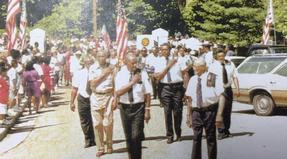




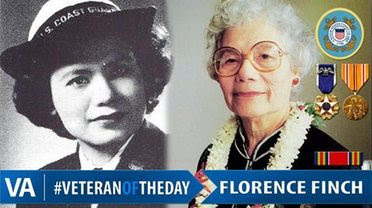 VETERAN OF THE WEEK
This week we honor Coast Guard Veteran Florence Ebersole Smith Finch. Florence served during World War II.
Florence was born in the Philippines. She was working as a secretary for U.S. Army intelligence in Manila when the Japanese invaded the Philippines soon after the attack on Pearl Harbor on Dec. 7, 1941.
VETERAN OF THE WEEK
This week we honor Coast Guard Veteran Florence Ebersole Smith Finch. Florence served during World War II.
Florence was born in the Philippines. She was working as a secretary for U.S. Army intelligence in Manila when the Japanese invaded the Philippines soon after the attack on Pearl Harbor on Dec. 7, 1941.
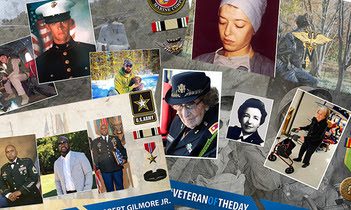

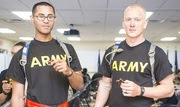

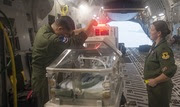

No comments:
Post a Comment